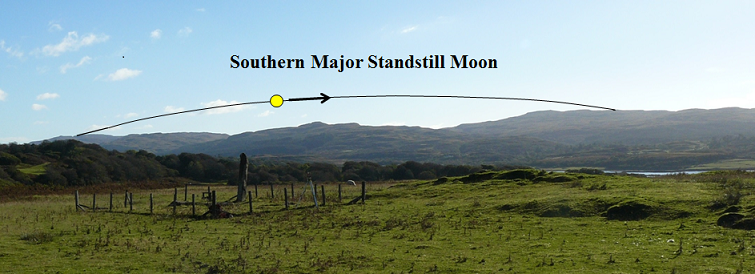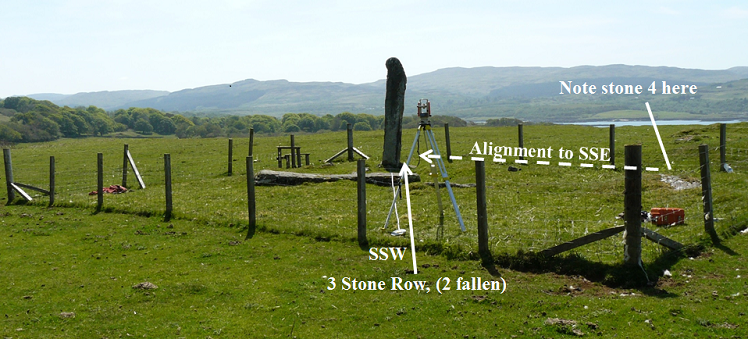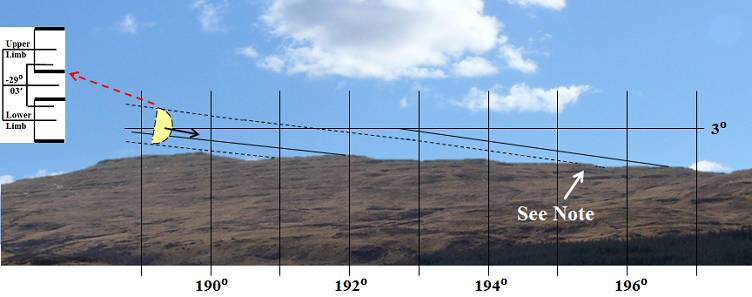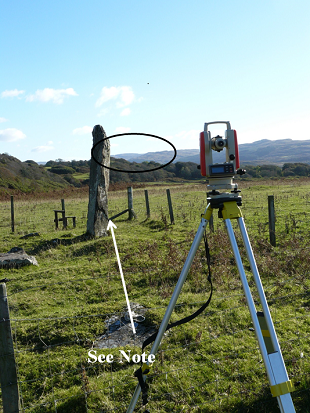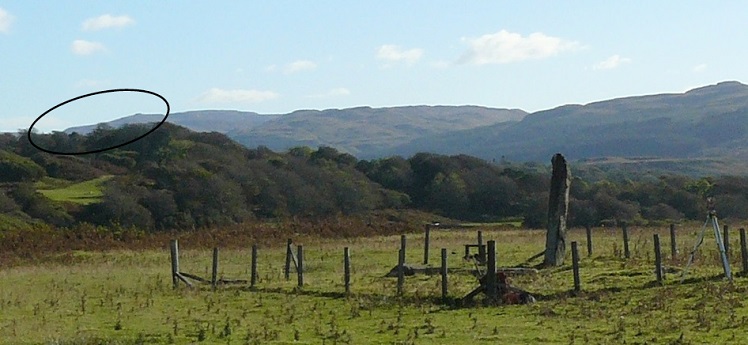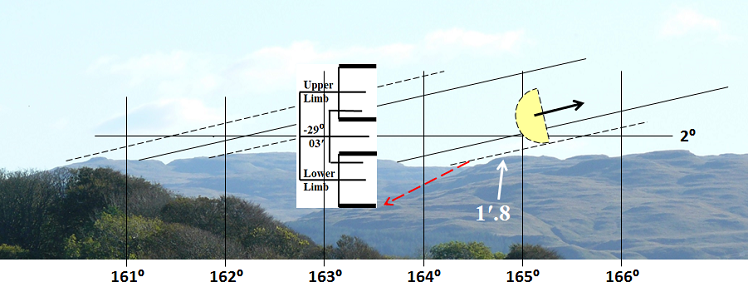A three stone row on open ground with only one stone still standing - about 2.8m x 0.5m x 0.4m. There is a nearly buried fourth stone not in the same line. Thom investigated this site (MLO pp66-67 ). See later.
The southern major standstill moon would have been visible throughout its passage from SSE to SSW:-
Thom determined an alignment for the setting moon from the three stone row. However as shown below and discussed later there is also a probable alignment for the rising moon using the fourth nearly buried stone.
Quinish Alignment to SSW
The alignment is for the extreme southern declination of the moon (−29º 27′.5 ); i.e with 'wobble' to the south, first quarter September. Thom gave the alignment foresight as the small top at about 189º .8 for the lower limb. However, while this could have been used, the moon would never have reached closer than 2′ or a little less.
Note: A better feature is the bump at about 195º.5 . At the extreme south the upper limb of the moon would have just reappeared to the right of the bump. There is ample nearly level ground in the region and so, as the moon approached closer to its southern extreme each month, it would have been easy by moving towards the foresight to find a place where the moon would just reappear and mark it with a stake.
The fourth stone ('See Note' in the image) and the remaining standing stone indicate the region of the rising southern moon
The upper limb of the rising full moon would just have cleared the small peak at about 160º.7 and the slope almost parallel to the moon's path to the left. One of the requirements for observation of the rising moon is that it is visible before the time of observation. By moving back the altitude of the ridge is lowered (See next image). This would also have enabled the moon to have been observed during the previous lunations as it approached the southern declination ( –28º 38′.5 ); i.e. with the 'wobble to the north. June. This is the same key lunar declination as found at Dervaig B. (See below).
There is also an alignment for the lower limb of the moon extreme southern declination ( –29º 27′.5) - third quarter in March. (Note that the alignment found for the setting moon is for the first quarter in September )
